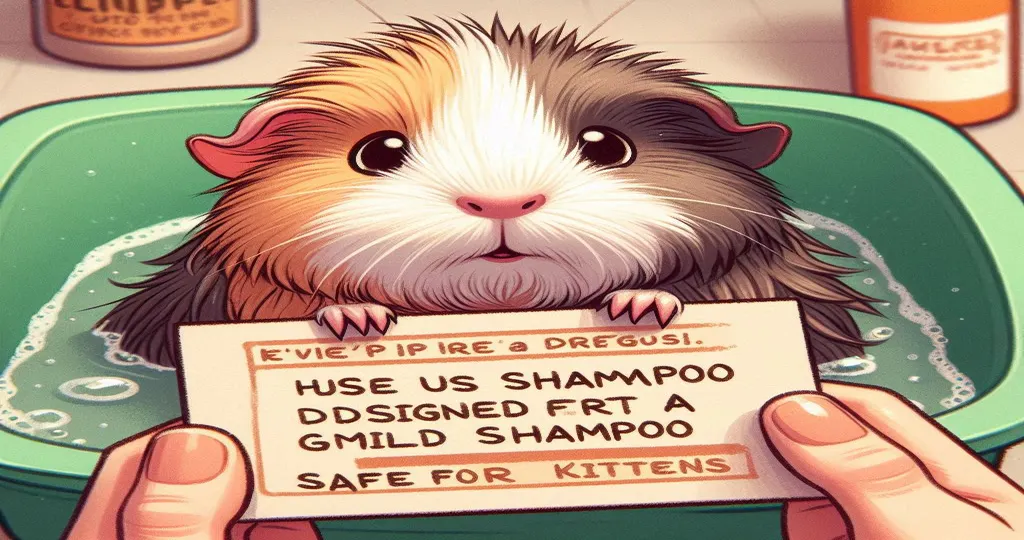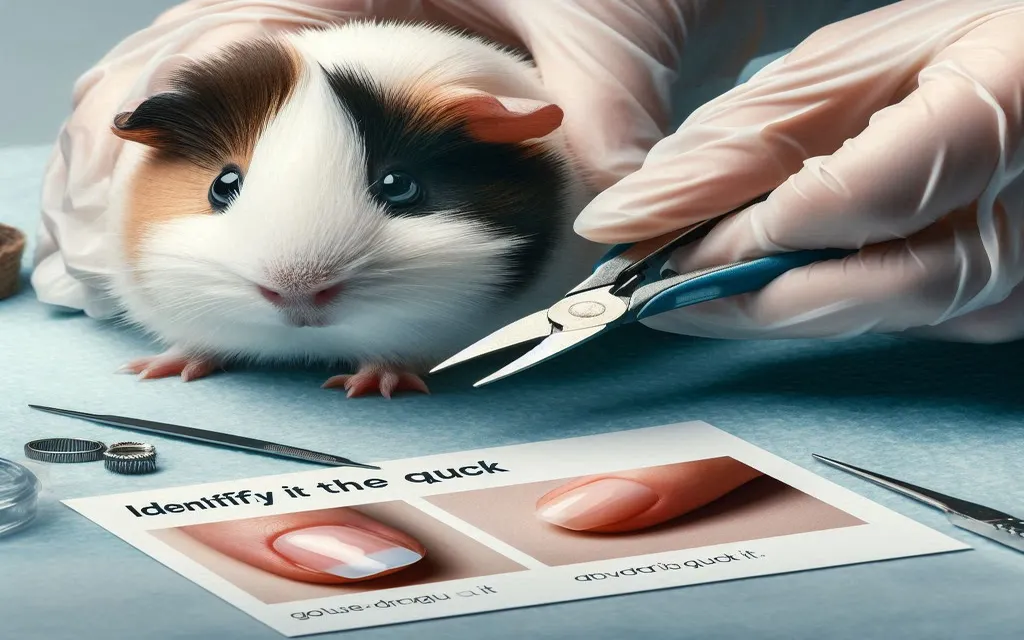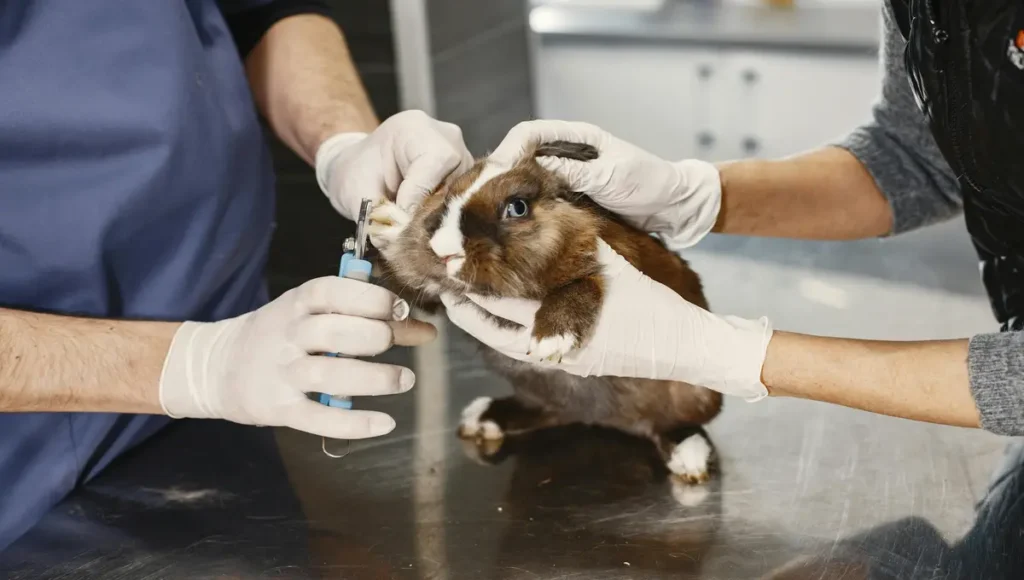Guinea pigs are delightful companions known for their endearing personalities and adorable quirks. But just like any pet, they require proper care, and grooming is a crucial aspect of their well-being. This comprehensive guide will cover everything you need to know to keep your guinea pigs looking their best and feeling their healthiest.
Contents
- Why Grooming Is Essential for Your Guinea Pig
- Equipping Your Guinea Pig Spa: Essential Grooming Tools
- Breed-Specific Grooming: Catering to Different Coat Types
- Handling Difficult Guinea Pigs During Grooming: Patience is Key
- Grooming and Overall Health: Prevention is the Best Medicine
- FAQs About Guinea Pig Grooming
- Conclusion: Grooming for a Happy, Healthy Guinea Pig
Why Grooming Is Essential for Your Guinea Pig
Grooming is much more than just keeping your guinea pig looking cute and cuddly. It plays a vital role in their overall health and happiness. Here are some key benefits of regular grooming:
- Healthy Coat: Brushing helps remove dirt, debris, and loose hair, promoting a clean and shiny coat.
- Skin Infection Prevention: Grooming helps prevent skin infections by keeping the fur clean and dry, reducing the risk of irritation and bacterial growth.
- Parasite Control: Regular grooming allows you to check for and address external parasites like lice and mites, which can cause itching, discomfort, and even more severe health problems.
- Early Detection of Health Issues: While grooming, you can inspect your guinea pig’s skin, fur, ears, and nails for any abnormalities, such as lumps, sores, or signs of parasites. Early detection can make a big difference in treating any health issues.
- Bonding Time: Grooming provides a beautiful opportunity to bond with your guinea pig. Gentle handling and a calm approach can help build trust and create a positive association with grooming.
Equipping Your Guinea Pig Spa: Essential Grooming Tools
Before you begin pampering your guinea pig, it’s essential to have the right tools on hand. Here’s a list of must-haves for your guinea pig grooming kit:
- Round-Tipped Scissors: These scissors are specifically designed for trimming hair around delicate areas, reducing the risk of accidental nicks and cuts.
- Professional Cat Nail Clippers: Opt for clippers designed for cats, as they are smaller and more suitable for guinea pig nails than dog clippers.
- Soft-Bristled Brush: This type of brush is ideal for short-haired guinea pigs and for brushing sensitive areas on long-haired breeds.
- Slicker Brush: A slicker brush is particularly effective for removing dead hair and tiny knots in long-haired guinea pigs.
- Double-Sided Comb: A comb with both wide and narrow teeth is helpful for managing long coats. The wide teeth help with detangling, while the narrow teeth can be used for finer grooming.
- Styptic Powder: Keep styptic powder on hand in case you accidentally cut into the quick (the pink part of the nail containing blood vessels) during nail trimming.
These grooming tools can be found at most pet stores or online retailers specializing in small animal supplies.

A Step-by-Step Guide to Pampering Your Guinea Pig
Now that you’re equipped with the right tools, let’s walk through a step-by-step guide to grooming your Guinea pig:
Brushing: The Foundation of a Healthy Coat
Frequency:
- Long-Haired Breeds: Daily brushing is essential to prevent mats and tangles.
- Short-Haired Breeds: Weekly brushing is generally sufficient.
Technique:
- Place your guinea pig on a towel or soft surface in a quiet area.
- Using a soft-bristled brush or a slicker brush (for long hair), gently brush in the direction of hair growth.
- For long hair, start at the head and work your way down, carefully removing any tangles.
Detangling Mats:
- If you encounter a mat, avoid pulling!
- Spray the mat with water to loosen it.
- Use a comb or your fingers to work through the mat gently.
- If the mat is too tight, carefully trim it away with round-tipped scissors.
Bathing: Only When Necessary
When to Bathe:
- Bathing should only be done when necessary, such as when your guinea pig is filthy, has a skin condition, or is preparing for a show. Routine bathing is not recommended.
Step-by-Step Guide:
- Preparation:
- Gather your supplies: a shallow basin, warm water, a guinea pig-safe shampoo, and towels.
- Fill the basin with about 2 inches of lukewarm water. The water should be warm to the touch but not hot.
- Place a towel in the bottom of the basin to provide traction and make your guinea pig feel more secure.
- Bathing:
- Gently lower your guinea pig into the water, supporting their body.
- Avoid getting water in their face or ears. You can use a small cup to wet their body.
- Apply a small amount of shampoo and lather gently.
- Thoroughly rinse all of the shampoos out of their fur.
- Drying:
- Wrap your guinea pig in a towel and pat them dry.
- Avoid using a hairdryer, as the noise and heat can be stressful.
- Make sure your guinea pig is dehydrated before returning them to their cage.
Nail Trimming: Maintaining Paw Health
Frequency:
- Guinea pig nails should be trimmed every 4 to 8 weeks.
Identifying the Quick:
- The “quick” is the pink part of the nail that contains blood vessels and nerves.
- Cutting into the quick will cause pain and bleeding.
- If your guinea pig has light-colored nails, the quick is easy to see.
- For dark nails, use a flashlight to help you see the quick.
Trimming Technique:
- Hold the paw firmly but gently.
- Using professional cat nail clippers, cut the nail a little bit in front of the quick.
- It’s better to cut a little bit at a time than to risk cutting into the quick.
- If you’re unsure, have a veterinarian or experienced groomer show you how to trim nails.
Using Styptic Powder:
- If you accidentally cut into the quick, apply styptic powder to the nail to stop the bleeding.
- Cornstarch or flour can also be used in a pinch.
Ear Cleaning: Preventing Mites and Infections
Frequency:
- Check your guinea pig’s ears regularly for any signs of buildup or irritation.
- Clean their ears 2-3 times a year or as needed.
- Long-haired breeds may require more frequent ear cleaning.
Signs of Ear Mites:
- Excessive scratching at the ears
- Head shaking
- A brown, crusty discharge in the ears
Cleaning Technique:
- Use cotton balls moistened with mineral oil or olive oil.
- Gently wipe the outer part of the ear, avoiding the ear canal.
- Never insert anything into the ear canal, as this can cause damage.
- If you notice any signs of infection (redness, swelling, discharge), consult a veterinarian.

Breed-Specific Grooming: Catering to Different Coat Types
Different guinea pig breeds have different coat lengths and textures, and their grooming needs vary accordingly:
Long-Haired Breeds: The High-Maintenance Beauties
- Daily Brushing: Essential to prevent mats and tangles.
- Regular Trimming: Trim the hair every few weeks, especially around the bottom and feet.
- Breed-Specific Trim Styles: Research the ideal trim style for your specific breed.
Short-Haired Breeds: Low-Maintenance, But Not Maintenance-Free
- Weekly Brushing: Keeps the coat clean and free of debris.
- Addressing Mats: Even short-haired breeds can develop mats, especially behind the ears or under the chin. Check for mats regularly and gently remove them.
Other Coat Types
- Curly Coats: Breeds with curly coats, like the Texel, require gentle brushing to prevent mats and maintain their curls.
- Coarse Coats: Breeds with coarse coats, like the Lunkarya, may need a slightly stiffer brush to remove debris and loose hair effectively.

Handling Difficult Guinea Pigs During Grooming: Patience is Key
Some guinea pigs may be nervous or resistant to grooming. Here are some tips for making the process less stressful:
- Understanding Stress Signals: Learn to recognize signs of stress in your guinea pig, such as freezing, vocalizations, attempts to escape, or nipping.
- Creating a Positive Experience:
- Use treats: Offer your guinea pig their favorite treats before, during, and after grooming to help them associate the experience with something positive.
- Gentle handling: Use a calm and soothing voice and handle your guinea pig gently.
- Safe Restraint Techniques: If your guinea pig is struggling or trying to bite, you can gently wrap them in a towel to provide a sense of security and make it easier to handle them.
- When to Seek Professional Help: If you’re having difficulty grooming your guinea pig, don’t hesitate to ask a veterinarian or experienced groomer for assistance.

Grooming and Overall Health: Prevention is the Best Medicine
Regular grooming plays a crucial role in preventing a number of health problems in guinea pigs:
- Flystrike Prevention: Flystrike occurs when flies lay eggs in soiled fur, and the maggots hatch and feed on the guinea pig’s flesh. Regular cleaning and trimming, especially around the bottom, can prevent this serious condition.
- Bumblefoot Prevention: Bumblefoot (pododermatitis) is a painful foot condition caused by pressure sores. Overgrown nails can force the guinea pig’s foot to turn sideways, contributing to bumblefoot. Regular nail trimming helps prevent this problem.
- Maintaining Skin Health: Grooming keeps the fur clean and dry, reducing the risk of skin irritations and infections. Check your guinea pig’s skin regularly for any signs of redness, scaling, or hair loss.
- Promoting Dental Health: While not directly related to fur or nail care, dental health is an essential aspect of overall guinea pig well-being. Providing plenty of hay and chew toys helps keep their teeth trimmed and prevents dental problems.
FAQs About Guinea Pig Grooming
How often should I trim my guinea pig’s nails?
It would be best if you trimmed your guinea pig’s nails at least once a month. Their nails grow continuously, and overgrown nails can turn their feet sideways and cause bumblefoot, an ulcer on the bottom of their foot.
How often should I groom my Guinea Pig?
Guinea pigs with short hair should be brushed about once a week. If they are shedding more than usual, you should brush them at least every other day. Long-haired guinea pigs need to be brushed and have any mats combed out daily.
How often should I trim my long-haired guinea pig’s hair?
You should trim your long-haired guinea pig’s hair when it reaches 3 inches in length or starts touching the ground. Many guinea pig owners choose to trim their guinea pigs’ hair once a month. It’s essential to trim the hair around their bottoms to prevent soiling and around their feet to prevent them from stepping on it.
How often should I bathe my guinea pig?
You should bathe your guinea pig between two and four times a year. You may need to bathe a guinea pig more often if it becomes soiled. However, overwashing your guinea pig can strip its fur of natural oils.
- What do I need to groom my guinea pig? The sources recommend having these items for grooming your guinea pig:
- Nail clippers: You can use nail clippers designed for cats, small animals, or even human babies. Avoid using dog nail clippers, as these are too large.
- Brush: Short-haired guinea pigs need a small, stiff brush, while long-haired guinea pigs need a fine-toothed comb and a soft-bristled brush.
- Scissors: Use round-tipped scissors to trim your guinea pig’s hair to avoid accidentally nicking them.
- Shampoo: Use a shampoo designed for guinea pigs or a mild, unscented, non-medicated shampoo that is safe for kittens.
- Towel: A towel is helpful for drying your guinea pig after a bath or providing a soft surface to sit on during grooming.
- Treats: Having treats on hand can make grooming a more positive experience for your guinea pig.
Conclusion: Grooming for a Happy, Healthy Guinea Pig
Regular grooming is an act of love and care for your guinea pig. It not only keeps them looking their best but also plays a vital role in their overall health and well-being. By investing a little time and effort in grooming, you can help your guinea pig live a long, happy, and healthy life. Remember, grooming is an excellent opportunity to bond with your furry friend, so make it a positive and enjoyable experience for both of you.


